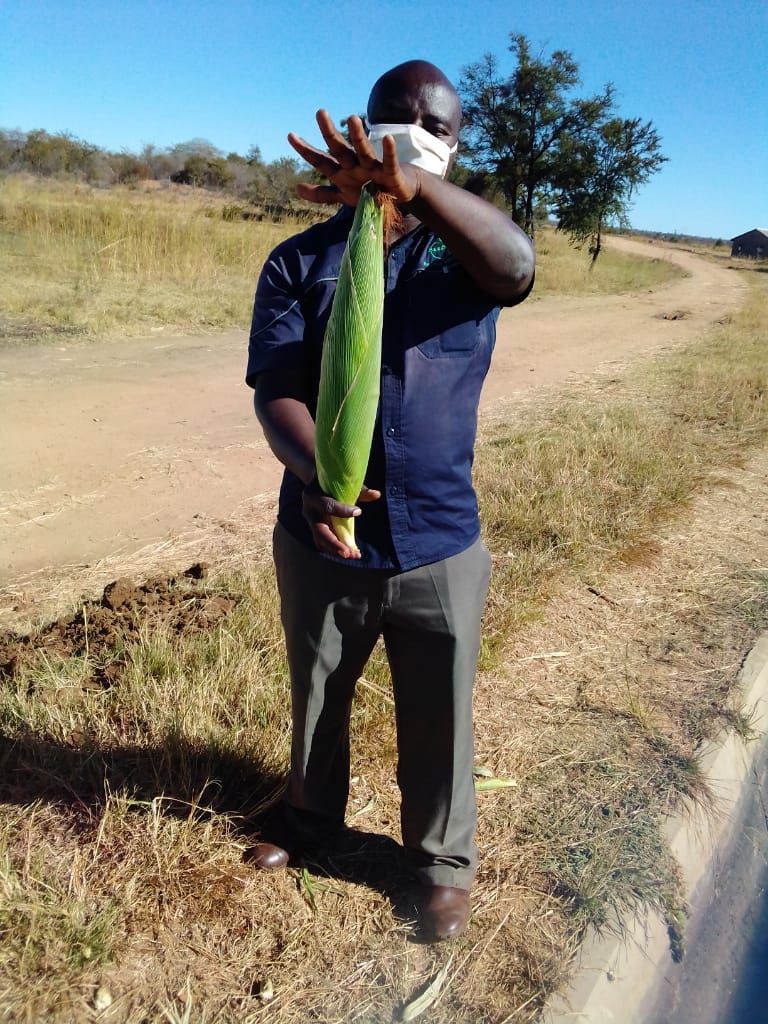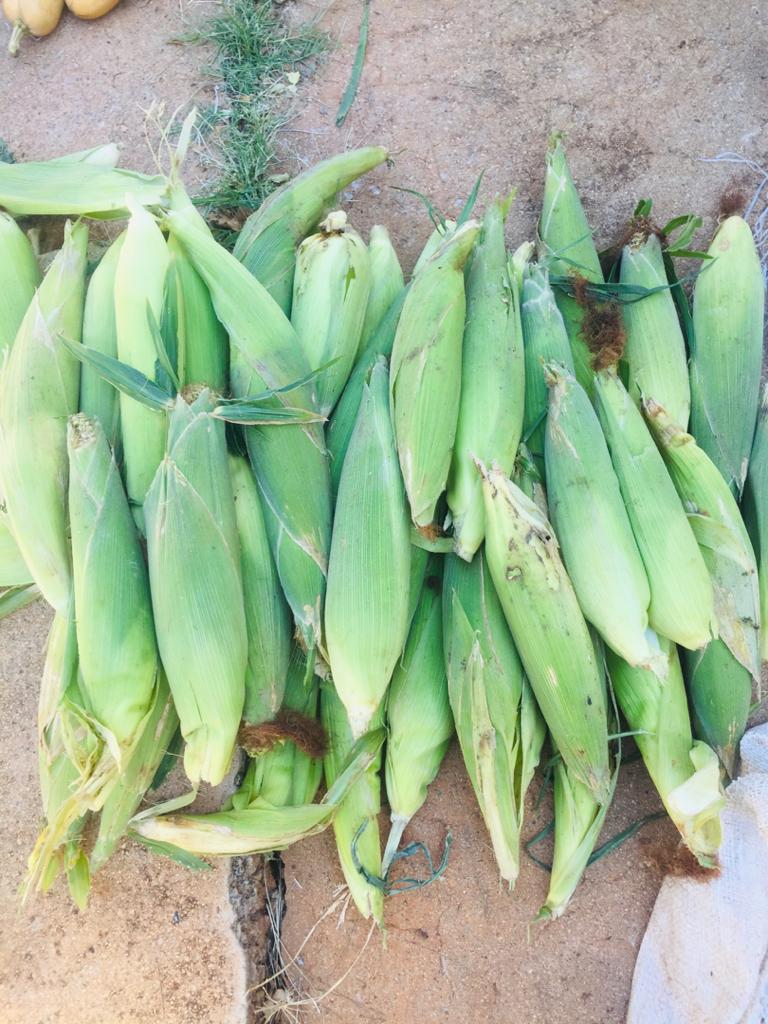The importance of soil sampling and soil conditioning
By Wendy Madzura
Farming is a business and as such every farmer should strive to understand every aspect of farming that can increase the return per dollar invested and as such lead to higher profitability. The soil is one of the most basic resources required for crop production. It is the most commonly used growing medium in which crops grow. Its two main roles are to supply nutrients and water to growing plants. Soil analysis plays a pivotal role in understanding the exact condition of the soil and it tells us what we need to correct it.

Soil analysis ensures that:
- The pH level, an important indicator of the soil conditions (acidity or alkalinity) is corrected.
- The nutrient level (both macro and micro) are understood and to ensure that the correct type, amount and quantity of fertilizer is applied.
Farmers are encouraged to test soils and condition their fields accordingly, well in time before the onset of the next season or before establish any crop. The best time to do soil sampling is in winter or after harvesting the summer crop. Doing soil sampling early ensures that farmers get ample time to get results and correct the soil before the onset of the next season.
When analysing the soil for pH the Calcium chloride scale is used. Soils that are said to be acidic have a pH of less than 7 on the scale. Soils that have a value that is greater than 7 are said to be alkaline, while soils with a pH of 7 are said to be neutral. The Calcium chloride scale measures the alkalinity or acidity of the soil on a scale of (0 – 14). The type and amount of lime is based on soil analysis results.
Soil acidity is basically caused by three things:
- Rainfall leaching nutrients such as calcium and magnesium beyond the root zone,
- The application of nitrogen fertilizers, through a process which releases hydrogen ions into the soil (AN and UREA).
- As a result of harvested crops removing nutrients like calcium and magnesium from the soil, replacing them with acidic elements like hydrogen.
The acidity of the soil may result in the following undesirable results that work against the thrust towards increased productivity:
- Affects phosphorous availability, hence affecting root growth for established crops affecting crop growth.
- It increases elements like aluminium and manganese to levels that a toxic to crops.
- Acidic soils affect the availability of micronutrients in the soil thereby affecting crop growth.
- It affects beneficial micro-organisms found in the soil (bacteria and fungi for nitrification).
- The physical condition of the soil is affected by soil acidity resulting in crusting/capping.
- It affects the effective use of agrochemicals like herbicides.
When conducting soil sampling the sample area must be divided into blocks. The blocks will be dependent on the visible variations of the soils / soil type. For example sandy soil, clay soils or sandy loamy soils, farmers should avoid sampling on ant hills as this will give bias and distort the result of the whole block. Generally, a block of 10 -20 ha is considered ideal. However block sizes can be even smaller if the soils are quite variable. In a given sampling block farmers should aim to collect a significant number of samples in order to get a true representation of the soil condition. The average number of sites per block can be 10-20. The sampling depth should be guided by the tillage layer which is the depth in which the roots will extract nutrients and water, this is usually about 20 -30 cm.
The sampling methods that are commonly used are the zig zag, random and the cross diagonal. The tools used when taking samples are augers, probes, hoes or even shovels. Samples from different sites in a block are mixed thoroughly and bagged into a khaki pocket and labelled CLEARLY. The volume of soil that constitutes a sample is between 1- 1.5 kg. Once this is done the next step is to take the samples to reputable labs for analysis, these include the Ministry of Agriculture’s department of research, Fertilizer companies, Zim labs, Aglabs and Universities.

The best time to apply lime is 3 to 6 months before the establishment of a crop. This will ensure that lime effectively corrects the pH and ensures that there is efficiency in the use of fertilizer. Soil analysis should be conducted after three to four years, however it can be conducted more frequently if a farmer practices double cropping or horticulture which alters the soil conditions especially when 2 or more cropping cycles are practised each year.
The amounts of lime should ALWAYS be guided by soil analysis results. However the general recommendation can be useful and is based on soil type. The liming rates vary as follows based on the soil type:
- Sandy soils = 100 kg/0.1 pH unit. A farmer with a sandy soil requires 1000 kg/1 tonne of lime to raise the pH from 4.5 (acidic) to 5.5 (slightly acidic).
- Sandy Loamy soils =120 kg/0.1 pH units. A farmer with sandy loamy soils requires 1200 kg of lime to raise pH from 4.5 acidic to 5.5 (slightly acidic).
- Clay soils = 200 kg/0.1 pH units. A farmer with sandy loamy soils requires 2000 kg of lime to raise pH from 4.5 (acidic) to (5.5).
In Zimbabwe there are two main liming agents:
1) Dolomitic Lime (Magnesium Carbonate). This type of lime is ideal for adjusting pH in magnesium deficient soils.
2) Calcitic Lime (Calcium Carbonate) which is suited for adjusting pH in calcium deficient soils.
The liming agent to use is best decided by soil analysis. Lime placement and incorporation is very important to ensure that the lime works effectively. The recommended placement depth is within the tillage layer/ root zone (15 -25 cm). Lime should be uniformly spread and incorporated into the soil. Incorporation can be achieved through Primary tillage were disking, harrowing followed by a roller is done or through conservation tillage methods that promote minimum soil disturbance which include Pfumvudza/Intwasa for small scale farmers or strip till for communal farmers.
Lime can be applied even without the above machinery. The important thing is to ensure that it is broadcasted in the field even by hand and incorporated into the soil using a plough. The important thing is to ensure that lime is applied timeously and is incorporated well within the soil.
The difference between lime and gypsum is not understood by most farmers. Some of them assume that the application of lime will correct pH levels in acidic soils which is not true. The difference in the two lies in their nature were by lime is (Calcium Carbonate/ Magnesium Carbonate) Lime has the ability to correct pH levels in acidic soils. Gypsum on the other hand is Calcium Sulphate which only acts as a supplementary source of calcium and sulphur. Gypsum does not correct pH levels in acidic soils. Gypsum is a very good source of calcium which plays a pivotal role in maintaining the structure of the soil by preventing crusting. It is also very important in crop growth resulting in improved yields.
In conclusion lime is very important because:
- Lime improves soil structure and nutrient availability resulting in increased productivity.
- Liming improves Fertilizer Use Efficiency (FUE) of crops resulting in a high return per dollar invested.
- Reduces the availability of toxic elements in the soil (manganese and aluminium
- Improves the environment for beneficial soil micro-organisms, liming soils creates a conducive environment for microorganisms to carry out necessary processes.
- Liming soils will enhance the efficacy of some herbicides (pre-emergence) and other soil based chemicals.
Wendy Madzura is Seed Co Head of Agronomy services and can be contacted on +263773270080, +263732270080; email: wendy.madzura@seedcogroup.com











